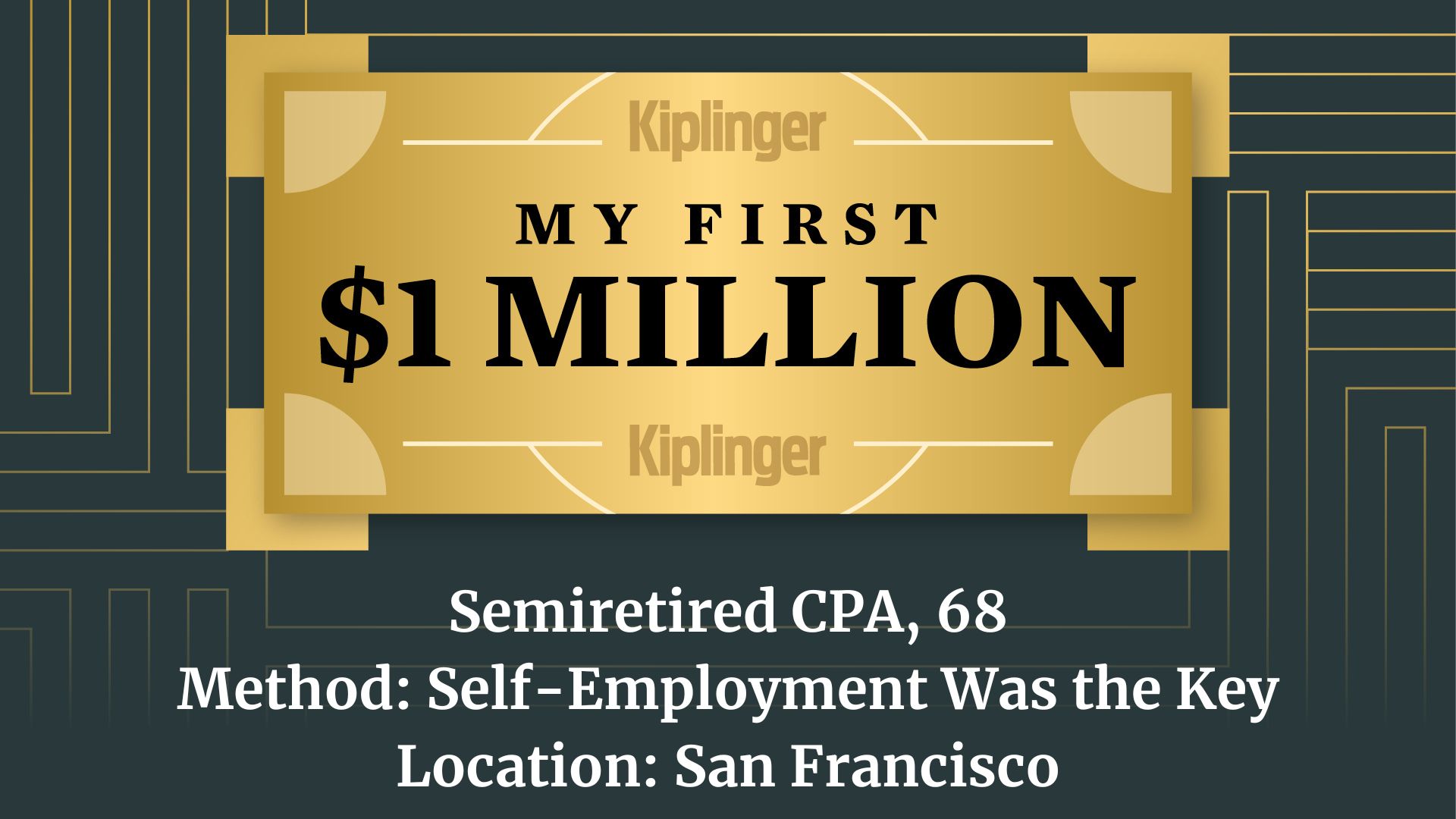It's Time to Fine-Tune Dividend Holdings
These five moves can help investors refine their dividend strategy.

For dividend investors, it's time to get picky. Investors focused on stocks paying regular dividends have lately reaped a bountiful harvest. But investors who snap up dividend payers indiscriminately—or load up on the highest-yielding stocks they can find—may find themselves with some rotten apples. Rising interest rates may hurt some types of dividend-paying stocks far more than others—and some of the most traditional dividend-paying sectors, such as utilities and telecom services, are likely to feel much of the pain, money managers and analysts say.
And while financial firms have rolled out a host of new dividend-focused mutual funds and exchange-traded funds, investors should tread carefully. They must scrutinize the funds' strategies and portfolios to be sure they're not overloading on overvalued dividend sectors that are poised for a fall.
Investors may be reluctant to tweak their dividend portfolios at a time when payouts are looking more generous. Among companies in Standard & Poor's 500-stock index, dividend payments in the first half of this year jumped about 14% over the first six months of 2012, with further growth projected in the second half of 2013. And 82% of companies in the S&P 500 pay dividends, the highest level in nearly 14 years.
From just $107.88 $24.99 for Kiplinger Personal Finance
Become a smarter, better informed investor. Subscribe from just $107.88 $24.99, plus get up to 4 Special Issues

Sign up for Kiplinger’s Free Newsletters
Profit and prosper with the best of expert advice on investing, taxes, retirement, personal finance and more - straight to your e-mail.
Profit and prosper with the best of expert advice - straight to your e-mail.
Although older investors may need to get more selective, they can remain confident in dividend stocks' benefits for retirement portfolios. For portfolios in drawdown mode, high-quality dividend stocks can provide steady and growing income as well as the potential for capital appreciation and a shield against inflation. The long-term returns of dividend payers have beaten the broader market with lower volatility. Between 1926 and 2012, dividends accounted for 42% of the S&P 500's total return.
Some retirees find that a well-curated collection of dividend payers helps them cover retirement expenses while largely ignoring the market's ups and downs. Bruce Miller, 62, of Vancouver, Wash., started building his portfolio of dividend payers soon after retiring from the Air Force in 1999. He looks for companies that have at least a ten-year track record of paying dividends, a dividend growth rate of at least 5% per year and cash flow amounting to at least 150% of the payout.
Miller's favorites include consumer-product makers such as Clorox and Kimberly-Clark. While a military pension covers most of his basic expenses, Miller finds steady dividends a reliable way to maintain his lifestyle, which includes a second home and traveling to see his seven grandchildren. As a buy-and-hold investor, he says he doesn't worry about stock price swings. "What I care about is the ability of companies to pay their dividend," he says.
Stocks yielding close to 3% or more may look attractive compared with the 2.6% yield of ten-year Treasury bonds, but investors should remember that dividend stocks are not a substitute for fixed income. Although dividend payers tend to be less volatile than the broader stock market, they've been considerably more volatile than bonds. Retirement portfolios should remain broadly diversified among cash, bond and dividend stock holdings.
The challenge today is guarding those dividend holdings against the market's blows. While a scattershot approach to dividends may have worked in years past, investors should now take a more targeted approach to collecting those payouts. Here's how to refine your dividend strategy to focus on reliable and growing payouts in the years ahead.
Look for dividend growth, not current yield. Income-focused fund managers who have a lot of leeway to move money among bonds, stocks, convertibles and other asset classes have lately made some big shifts toward dividend stocks. But those shifts have largely focused on finding future dividend growth, not the highest current yield.
In the Franklin Income Fund, for example, just 36% of assets were in bonds at the end of June, down from 51% a year earlier, says manager Ed Perks. Instead of beefing up allocations to some of the market's highest yielding sectors such as utilities and real estate investment trusts, Perks says, he moved money into sectors offering lower yields but stronger dividend growth potential, such as technology, energy and materials.
Likewise, the Delaware Dividend Income Fund, which can invest in bonds as well as stocks, has shifted more money toward stocks in the past year, says manager Babak Zenouzi. At the same time, Zenouzi says, he deliberately lowered the yield in the fund by selling high-yield "junk" bonds and higher yielding REITs.
Many fund managers say they've retreated from higher yielding stock sectors largely because they've become too pricey as investors have gorged on the highest payouts they can find. "A lot of this yield-chasing is chasing very expensive and unsafe yield," Zenouzi says.
Older investors have additional reasons to focus on dividend growth rather than current yield. Steadily growing dividends can help maintain your purchasing power in retirement. And in some cases, a high dividend yield may indicate that the market has knocked down the stock's price in anticipation of a potential dividend cut or other troubles. (Dividend yield is the annual dividend per share divided by the stock price.)
Early last year, for example, investors punished the shares of Portugal Telecom (symbol PT) despite the stock's double-digit dividend yield. Shareholders thought the dividend wasn't sustainable, so the stock "didn't get any credit for having this high yield," says John Buckingham, chief investment officer at Al Frank Asset Management, in Aliso Viejo, Cal. Indeed, the company in mid 2012 cut the dividend in half.
[page break]
Do-it-yourselfers seeking steady dividend growers might devise their own stock screens, such as retiree Bruce Miller's, incorporating dividend payment history, growth rates and cash flow. Or you can rely on a mutual fund or ETF to do the work for you. Vanguard Dividend Growth Fund (VDIGX), for example, is focused on high-quality companies that are committed to growing dividends over the long term.
Understand the impact of rising rates. While many older investors fear that rising rates will drag down their bond holdings, they may have overlooked the damage that higher rates can inflict on dividend payers. Because rising rates allow investors to find higher yields in the bond market, stocks will also have to offer higher yields to remain competitive. Stocks' dividend yields can rise because dividends increase—or because the market drives share prices lower.
History shows that rising-rate cycles can be tough on dividend-paying stocks. Josh Peters, director of equity-income strategy at Morningstar, recently studied cycles in which the monthly average ten-year Treasury yield rose one percentage point or more from its low point. In seven such cycles since 1992, the S&P 500 delivered an average total return of 11%, well ahead of the 3.7% average return for the Dow Jones US Select Dividend Index. Since the ten-year Treasury yield's July 2012 low of 1.53%, dividend investors aren't exactly hurting, but the pattern of underperforming the broader market continues, Peters found. The S&P 500 gained 25% from the start of the cycle through the end of July 2013, versus about 23% for the Dividend Index.
This by no means indicates that investors should abandon dividend stocks during rising rate periods. While rising rates may affect dividend payers' performance relative to the broader market, "the absolute total return story for someone who finds the income appealing is not that bad," Peters says.
Some dividend-paying sectors have proven far more vulnerable to rising rates than others. The market's most defensive sectors, such as utilities and telecommunications, tend to fare the worst. Two reasons: Conservative investors can find better yields in bonds after rates rise, and rising rates often go hand in hand with stronger economic growth, which favors more cyclical, growth-oriented sectors such as technology and industrials. Indeed, utilities lagged the S&P 500 by an average 10.4 percentage points during the historic rising-rate cycles Morningstar studied and by 17 percentage points in the current cycle.
Cast a wider net. Fortunately, investors no longer need to focus on the traditional defensive sectors when seeking dividends. In fact, the biggest contribution to dividends of the S&P 500 now comes from a sector that didn't traditionally offer much in the way of payouts: technology. The sector accounted for 15.5% of the S&P 500’s dividends at the end of July.
Tech giants IBM (IBM) and Microsoft (MSFT) have "considerable amount of free cash flow and strong balance sheets, and can continue to raise their dividend," says Linda Bakhshian, who manages several dividend-focused portfolios at Federated Investors.
Morningstar's Peters favors Intel (INTC). Although the chip maker has been weighed down by challenges in its personal-computer business, "that downturn is not going to last forever" and the company's server business is performing well, he says.
In a few years, Peters says, Intel will start devoting a more significant portion of its cash flow to dividends.
Apple (AAPL), which started paying a dividend last year and boosted it this year, "is a great name to own based on valuation, the strength of the balance sheet, and the dividend yield and share buyback program," Buckingham says. His Al Frank Dividend Value Fund devoted 19% of assets to tech stocks at the end of June.
For fast-growing dividends and relative resilience amid rising rates, investors should also look to financials, managers and analysts say. After spending years working through financial-crisis hangovers, many banks are now getting back to the business of raising dividends.
Although rising rates can be a mixed bag for the financial sector, banks have beaten the S&P 500 by six percentage points during the current rising-rate cycle, according to Morningstar. Higher long-term rates can drag down mortgage originations, a key source of fees for many banks, Peters says. But when shorter-term rates start to rise, he says, banks can immediately start charging higher rates on many loans, while they still have a large base of customer deposits paying essentially zero interest—and they'll profit from the spread between the two. Peters favors Wells Fargo (WFC), which relies largely on that relatively simple business model and pays a dividend that has bounced back quickly from the financial crisis, to a current quarterly payout of 30 cents per share.
One corner of the financial sector that doesn't win much praise from dividend-oriented money managers is REITs. Mortgage REITs in particular may be hurt by rising rates, says Brian McMahon, manager of the Thornburg Investment Income Builder Fund. But managers and analysts are still finding some value in REITs focused on retail properties. Realty Income (O), whose properties are leased to retailers and other commercial enterprises, for example, offers a steadily increasing monthly dividend and yields about 4.7%. "It could certainly underperform if interest rates go up, but there's pretty good cushion there" in the dividend yield, Peters says.
Look overseas for dividend yield. Foreign stocks in both developed and emerging markets tend to offer higher dividend yields than their U.S. competitors. But they also come with potential pitfalls for U.S. investors.
Foreign dividend payers deliver broader diversification and often better valuations than U.S. stocks, money managers say. McMahon says he's slightly tilting his portfolio toward non-U.S. dividend payers. In the energy sector, for example, he holds international oil giants Royal Dutch Shell (RDS.A) and Total (TOT), whose 4% to 5% dividend yields are well ahead of U.S. competitors such as Exxon Mobil (XOM), which offers a 2.6% yield.
When buying foreign dividend payers, remember that many countries withhold taxes on dividends paid to U.S. shareholders. (One notable exception is the United Kingdom.) The amount withheld is often 10% to 20%. If you hold the shares in a taxable account, you can recover those amounts through the foreign tax credit. If you hold the shares in an IRA or other tax-deferred account, you can't claim the credit. To find the foreign taxes you've paid, look at Box 6 on Form 1099-DIV. Taxpayers claiming a foreign tax credit generally must file Form 1116.
Currency swings can add a case of whiplash when dividends aren't paid in U.S. dollars. Many mutual funds hedge away some, but not all, of this exposure. In the Thornburg fund, for example, McMahon says he tends to hedge the euro but retains some exposure to the pound and Asian currencies.
Delve into fund strategies. Fund companies' race to roll out dividend funds has left investors with an overwhelming array of choices. When choosing a dividend-focused fund, consider whether the fund is more focused on maximizing income or pursuing more moderate yields and strong future dividend growth. Funds in the two categories are likely to have very different portfolios.
The iShares Select Dividend ETF (DVY), for example, tracks an index that selects stocks based on dividend yield. The methodology has led to a huge concentration in the utilities sector—nearly 30% in early August. Likewise, the WisdomTree Equity Income ETF (DHS), whose index also selects holdings based on dividend yield, recently had about 13% in utilities and 11.5% in telecom stocks. Investors looking for dividend growth and broader diversification might prefer the Vanguard Dividend Appreciation ETF (VIG), which focuses on companies that have raised dividends for at least ten consecutive years. The fund had just 1% in utilities and 0.1% in telecom as of the end of June.
Haven't yet filed for Social Security? Create a personalized strategy to maximize your lifetime income from Social Security. Order Kiplinger’s Social Security Solutions today.
Profit and prosper with the best of Kiplinger's advice on investing, taxes, retirement, personal finance and much more. Delivered daily. Enter your email in the box and click Sign Me Up.

-
 10 Cheapest Places to Live in Washington
10 Cheapest Places to Live in WashingtonProperty Tax Is Washington your go-to ski destination? These counties combine no income tax with the lowest property tax bills in the state.
-
 Healthy to 100: Secrets from Countries Where Retirees Age Best
Healthy to 100: Secrets from Countries Where Retirees Age BestLongevity is a team sport, according to author Ken Stern. Here's the secret sauce for living long, healthy lives from countries like Italy and Japan.
-
 My First $1 Million: Semiretired CPA, 68, San Francisco
My First $1 Million: Semiretired CPA, 68, San FranciscoEver wonder how someone who's made a million dollars or more did it? Kiplinger's My First $1 Million series uncovers the answers.
-
 What Fed Rate Cuts Mean For Fixed-Income Investors
What Fed Rate Cuts Mean For Fixed-Income InvestorsThe Fed's rate-cutting campaign has the fixed-income market set for an encore of Q4 2024.
-
 The Most Tax-Friendly States for Investing in 2025 (Hint: There Are Two)
The Most Tax-Friendly States for Investing in 2025 (Hint: There Are Two)State Taxes Living in one of these places could lower your 2025 investment taxes — especially if you invest in real estate.
-
 The Final Countdown for Retirees with Investment Income
The Final Countdown for Retirees with Investment IncomeRetirement Tax Don’t assume Social Security withholding is enough. Some retirement income may require a quarterly estimated tax payment by the September 15 deadline.
-
 Dividends Are in a Rut
Dividends Are in a RutDividends may be going through a rough patch, but income investors should exercise patience.
-
 Municipal Bonds Stand Firm
Municipal Bonds Stand FirmIf you have the cash to invest, municipal bonds are a worthy alternative to CDs or Treasuries – even as they stare down credit-market Armageddon.
-
 Best Banks for High-Net-Worth Clients
Best Banks for High-Net-Worth Clientswealth management These banks welcome customers who keep high balances in deposit and investment accounts, showering them with fee breaks and access to financial-planning services.
-
 High Yields From High-Rate Lenders
High Yields From High-Rate LendersInvestors seeking out high yields can find them in high-rate lenders, non-bank lenders and a few financial REITs.
-
 Time to Consider Foreign Bonds
Time to Consider Foreign BondsIn 2023, foreign bonds deserve a place on the fringes of a total-return-oriented fixed-income portfolio.